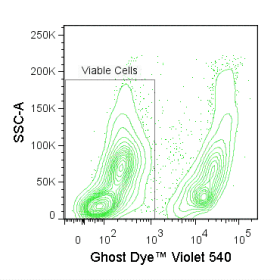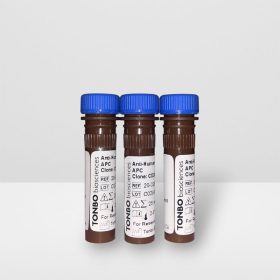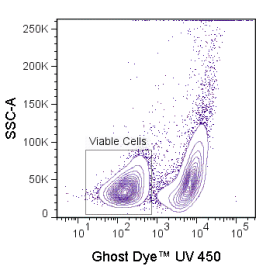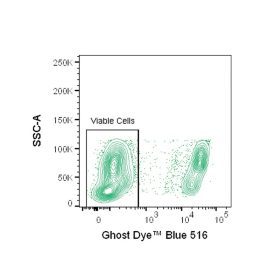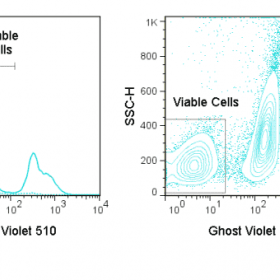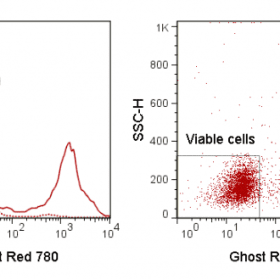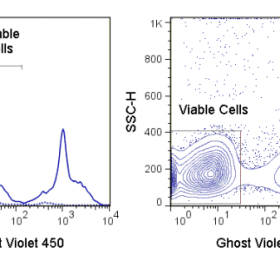Product Description
Ghost Dye™ Red 710 is an amine reactive viability dye that can be used to discriminate viable from non-viable mammalian cells in flow cytometry applications. This dye irreversibly binds free amines available on the cell surface as well as intracellular free amines exposed in cells with compromised cell membranes. Necrotic cells with compromised membranes will react with significantly more Ghost Dye™ Red 710 dye than viable cells in the same sample and therefore will exhibit much greater fluorescence intensity allowing exclusion of these cells from analysis.
| Name | Ghost Dye™ Red 710 |
|---|---|
| Cat. No. | 13-0871 |
| Protocol | Download Protocol |
| Excitation Laser | Red (633-647 nm) |
| Emission (nm) | 710 |
| Formulation | 1 µL/test in DMSO |
| Application | Flow Cytometry |
Product Details
Application Key:FC = Flow Cytometry; FA = Functional Assays; ELISA = Enzyme-Linked Immunosorbent Assay; ICC = Immunocytochemistry; IF = Immunofluorescence Microscopy; IHC = Immunohistochemistry; IHC-F = Immunohistochemistry, Frozen Tissue; IHC-P = Immunohistochemistry, Paraffin-Embedded Tissue; IP = Immunoprecipitation; WB = Western Blot; EM = Electron Microscopy
*Tonbo Biosciences tests all antibodies by flow cytometry. Citations are provided as a resource for additional applications that have not been validated by Tonbo Biosciences. Please choose the appropriate format for each application and consult the Materials and Methods section for additional details about the use of any product in these publications
Recent Publications:
Paschall AV, Middleton DR, Wantuch PL, Avci FY. Therapeutic Activity of Type 3 Streptococcus pneumoniae Capsule Degrading Enzyme Pn3Pase. Pharm Res. 2020 Nov 2;37(12):236. doi: 10.1007/s11095-020-02960-3. PMID: 33140159; PMCID: PMC7605875.
Gestal MC, Blas-Machado U, Johnson HM, et al. Disrupting Bordetella Immunosuppression Reveals a Role for Eosinophils in Coordinating the Adaptive Immune Response in the Respiratory Tract. Microorganisms. 2020 Nov 17;8(11):1808. doi: 10.3390/microorganisms8111808. PMID: 33212993; PMCID: PMC7698589.
Deppermann C, Peiseler M, Zindel J, et al. Tacrolimus impairs Kupffer cell capacity to control bacteremia: why transplant recipients are susceptible to infection. 2020 Aug 6. Hepatology. 2020;10.1002/hep.31499. doi:10.1002/hep.31499.
Chronic unilateral cervical vagotomy reduces renal inflammation, blood pressure, and renal injury in a mouse model of lupus. Pham GS, Gusson Shimoura C, Chaudhari S, Kulp DV, Mathis KW. 2020 Jun 15. Am J Physiol Renal Physiol. 2020;10.1152/ajprenal.00201.2020. doi:10.1152/ajprenal.00201.2020.
Zhichao Fan, Zbigniew Mikulski, Sara McArdle, Prithu Sundd, Klaus Ley. Super-STORM: Molecular Modeling to Achieve Single-molecule Localization with STORM Microscopy. ScienceDirect. 2020 June 3: https://doi.org/10.1016/j.xpro.2019.100012.
Rita Kansal, Noah Richardson, Indira Neeli, Saleem Khawaja, Damian Chamberlain, Marium Ghani, Qurat-ul-ain Ghani, Louisa Balazs, Sarka Beranova-Giorgianni, Francesco Giorgianni, James N. Kochenderfer, Tony Marion, Lorraine M. Albritton, Marko Radic. Sustained B cell depletion by CD19-targeted CAR T cells is a highly effective treatment for murine lupus. Sci Transl Med. 2019 Mar 6;11(482). pii: eaav1648. doi: 10.1126/scitranslmed.aav1648

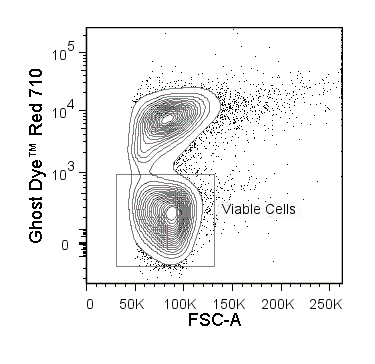
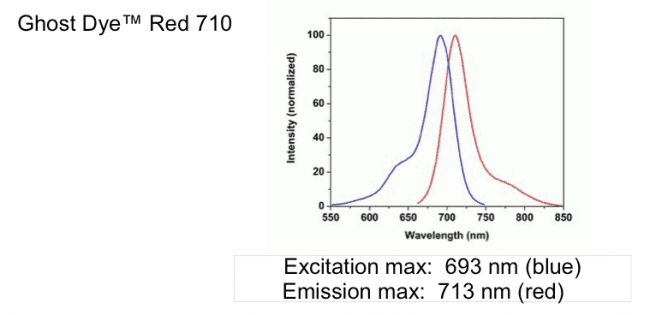
 Technical Data Sheet
Technical Data Sheet Request Custom/Bulk
Request Custom/Bulk